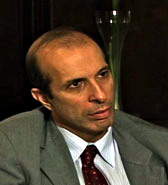Objetivos:
Diretos humanos são tradicionalmente associados a um conjunto de direitos e deveres atribuídos aos indivíduos frente ao Estado. Desde os anos 1990, com o avanço da globalização e expansão das empresas, iniciou-se um novo movimento internacional de responsabilização dessas empresas por violações a diversos direitos humanos, incluindo trabalho escravo, desastres ambientais e discriminações religiosas, de gênero e raça. O curso de Direitos Humanos e Empresas busca realizar um mapeamento analítico e institucional do papel das empresas para promoção dos direitos humanos, destacando-se questões e práticas relacionadas à responsabilidade corporativa. O curso foi estruturado em três partes. A primeira apresenta os contextos jurídico, econômico, político e social que tem impulsionado e moldado o atual campo dos direitos humanos para negócios, incluindo questões de poder, impactos na aquisição de direitos e fortalecimento da sociedade civil. A segunda parte abordará os desafios jurídicos para definição e regulação externa das obrigações das empresas em relação aos direitos humanos, incluindo esfera de influência, jurisdição extraterritorial, responsabilidade do Estado de origem e cadeias de fornecimento. A terceira parte abordará aspectos de regulação interna, buscando-se identificar, numa perspectiva crítica, os esforços para implementação de ferramentas de accountability, incluindo procedimentos voluntários, relatórios, iniciativas multi-stakeholder, supervisão multilateral e litígios domésticos.
Bibliografia:
AKERLOF, George A. The Market for Lemons: Quality Uncertainty and the Market Mechanism. The Quarterly Journal of Economics, Vol. 84, No. 3. 1970.
ALCHIAN, Armen Albert, e DEMSETZ, Harold, Production, Information Costs, and Economic Organization, The American Economic Review, vol. 62, 1972.
BERLE, Adolf A.; MEANS, Gardiner C. The modern corporation and private property. 10. ed. Transaction Publishers, 2009.
BISHOP, John Douglas. “The Limits of Corporate Human Rights Obligations and the Rights of For-Profit Corporations,” Business Ethics Quarterly, 22 (January 2012);
BILCHITZ, “A chasm between ‘is’ and ‘ought’? A critique of the normative foundations of the SRSG’s Framework and Guiding Principles,” in Surya Deva and David Bilchitz, eds, Human Rights Obligations of Business;
BRANDÃO, Carlos Eduardo Lessa; SANTOS, Homero Luís. Guia de sustentabilidade para as empresas. São Paulo: IBGC, 2007
BROSS, Dan. “How Microsoft did it: Implementing the Guiding Principles on Business and Human Rights,” available at http://www.bsr.org/en//our-insights/bsr-insight-article/how-microsoft-did-itimplementing-the-guiding-principles-on-business-and-hu;
CRAGG, Wesley. “Ethics, Enlightened Self-Interest, and the Corporate Responsibility to Respect Human Rights: A Critical Look at the Justificatory Foundations of the UN Framework,” Business Ethics Quarterly, 22 (January 2012);
COASE, Ronald, The firm, the market and the law, University of Chicago Press, 1990.
___________, The nature of the firm, in AAVV, The nature of the firm – origins, evolution and development, London, Oxford University, 1991, 18-33.
___________, The problem of social cost, in The firm, the market and the law, Chicago, University of Chicago, 1990, 95-156.
COFFEE JR., John C.. Gatekeepers: the professions and corporate governance. New York: Oxford University Press, 2006
COMPARATO, Fábio Konder, A Afirmação Histórica dos Direitos Humanos, 7ª ed., São Paulo: Saraiva, 2010
___________, A Civilização Capitalista. 2ª. ed. São Paulo: Saraiva, 2014. v. 1. 312p.
___________, A reforma da empresa, in Direito empresarial – estudos e pareceres, São Paulo, Saraiva, 1990, 3-26.
DELOITTE, “Conflict Minerals: Understanding Compliance Challenges,” available at http://www.deloitte.com/assets/DcomUnitedStates/Local%20Assets/Documents/IMOs/Corporate%20Responsibility%20and%20Sustai nability/us_deloittesustainability_conflictmineral_compliance_021114.pdf;
EQUATOR PRINCIPLES BANKS, “Equator Principles III,” available at http://www.equatorprinciples.com/resources/equator_principles_III.pdf; also have a look at the list of participating banks, available at http://www.equator-principles.com/index.php/members-reporting/membersand-reporting;
EUROPEAN COMMISSION, “A renewed EU strategy 2011-14 for Corporate Social Responsibility,” available at http://eurlex.europa.eu/LexUriServ/LexUriServ.do?uri=COM:2011:0681:FIN:EN:PDF;
___________, “Legislative Proposal on Non-Financial Reporting,” available at http://eur-lex.europa.eu/LexUriServ/LexUriServ.do?uri=CELEX:52013PC0207:EN:NOT;
EXPORT DEVELOPMENT CANADA, “Human Rights,” available at http://www19.edc.ca/publications/2013/2012csr/english/10-6.shtml.
GOLDHABER, Michael. “The Global Lawyer: The Movement for Law Firms Human Rights Gathers Steam,” The American Lawyer, January 16, 2013.
___________, “The Zombification of Corporate Alien Tort,” The Litigation Daily, April 21, 2013;
___________, “Corporate Human Rights Litigation in Non-U.S. Courts: A Comparative Scorecard,” UC Irvine Law Review, 3 (February 2013):127-149;
HANSMANN, Henry; The Ownership of Enterprise. Harvard University Press, 2009.
ICMM, “Integrating Human Rights Due Diligence into Corporate Risk Management Processes,” http://www.icmm.com/page/75929/human-rights-in-the-mining-and-metals-industry-integratinghuman-rights-due-diligence-into-corporate-risk-management-processes;
INSTITUTO BRASILEIRO DE GOVERNANÇA CORPORATIVA. Código das Melhores Práticas de Governança Corporativa. 5.ed. São Paulo: Instituto Brasileiro de Governança Corporativa, 2015.
___________, Código Brasileiro das Melhores Práticas de Governança Corporativa. Disponível em: http://www.ibgc.org.br/Download.aspx?Ref=Codigos&CodCodigo=47
INTERNATIONAL FINANCE CORPORATION, “UN Guiding Principles on Business and Human Rights and IFC Sustainability Framework,” available at http://www.ifc.org/wps/wcm/connect/c3dedb0049c51e71886d99da80c2ddf3/UNGPsandIFC-SFDRAFT.pdf?MOD=AJPERES;
INTERNATIONAL TRADE UNION CONFEDERATION, “The United Nations ‘Protect, Respect, Remedy’ Framework and the United Nations Guiding Principles for Business and Human Rights: A Guide for Trade Unionists,” available at http://www.ituc-csi.org/IMG/pdf/12-0423_ruggie_background_fd.pdf.
JUSTIÇA GLOBAL. Atingidos e Barrados: As Violações de Direitos Humanos na Hidrelétrica Candonga. Rio de Janeiro: Justiça Global, 2004
KNOX, John H. “The Ruggie Rules: Applying Human Rights Law to Corporations,” in Radu Mares, ed, The UN Guiding Principles on Business and Human Rights;
KOSKENNIEMI, Martti. The Police in the Temple. Order, Justice and the UN: A Dialectical View. European Journal of International Law, vol. 6, 1995.
KEAY, Andrew. Accountability and the corporate governance framework: from Cadbury to the UK Corporate Governance Code. (August 31, 2012). Disponível em: http://ssrn.com/abstract=2143171
KENNEDY, Duncan. Three Globalizations of Law and Legal Thought: 1850-2000, in The New Law and Economic Development. A Critical Appraisal, David Trubek and Alvaro Santos (Eds.), 2006.
KENNEDY, David W., A World of Struggle: How Power, Law & Expertise Shape Global Political Economy, Princeton University Press, 2016.
___________, The International Human Rights Movement: Part of the Problem? European Human Rights Law Review. vol. 3, 2001.
LIPTON, Martin; SCHWARTZ, Kevin S. A United Nations Proposal Defining Corporate Social Responsibility For Human Rights. Wachtell, Lipton, Rosen & Katz, 1° de maio de 2008.
MCCORQUODALE, Robert. “Pluralism, global law and human rights: Strengthening corporate accountability for human rights violations,” Global Constitutionalism, 2 (July 2013);
MILLSTEIN, Ira, M. et. al. Corporate Social Responsibility for Human Rights: Comments on the UN Special Representative’s Report Entitled ‘Protect, Respect and Remedy: a Framework for Business and Human Rights. Weil, Gotshal & Manges, 22 de maio de 2008.
MINING WATCH CANADA, “Abuse by Barrick Gold of non-judicial grievance mechanisms for victims of rape by security guards at the Porgera Joint Venture mine in Papua New Guinea,” letter to UN High Commissioner for Human Rights, available at http://www.miningwatch.ca/sites/www.miningwatch.ca/files/letter_to_unhchr_on_porgera_2013 -03-19.pdf’
MUCHLINSKI, Peter. “Implementing the New UN Corporate Human Rights Framework: Implications for Corporate Law, Governance, and Regulation,” Business Ethics Quarterly, 2012.
MUIR WATT, Horatia; ARROYO, Diego P. Fernández (Ed.). Private International Law and Global Governance. Oxford University Press, USA, 2015.
NESTLE AND DANISH INSTITUTE FOR HUMAN RIGHTS, “Human Rights Impact Assessment White Paper,” available at http://www.nestle.com/assetlibrary/documents/library/documents/corporate_social_responsibility/nestle-hria-whitepaper.pdf;
OHCHR, “Allegations regarding Porgera Joint Venture remedy framework,” available at http://www.ohchr.org/Documents/Issues/Business/LetterPorgera.pdf;
OPINION OF THE EUROPEAN UNION AGENCY FOR FUNDAMENTAL RIGHTS, Improving access to remedy in the area of business and human rights at the EU level. 2017.
Organization for Economic Cooperation and Development – OECD. “Recommendations of the Council on Common Approaches for Officially Supported Export Credits and Environmental and Social Due Diligence,” TAD/ECG(2012)5, 28 June 2012, http://search.oecd.org/officialdocuments/displaydocumentpdf/?cote=tad/ecg(2012)5&doclanguag e=en;
OSTROM, Elinor. Community and the endogenous solution of commons problems. Journal of Theoretical Politics, v. 4, n. 3, p. 343-351, 1992.
___________, Governing the Commons: The Evolution of Institutions for Collective Action. Cambridge: Cambridge University Press, 1990.
OXFAM, “Business & Human Rights: An Oxfam Perspective on the UN Guiding Principles,” available at http://www.oxfam.org/sites/www.oxfam.org/files/tb-business-human-rights-oxfamperspective-un-guiding-principles-130613-en.pdf;
OXFAM, Behind the Brands. 2013. Disponível em: www.behindthebrands.org/images/media/Download-files/bp166-behind-brands-260213-en.pdf.
PARGENDLER, Mariana, The Corporate Governance Obsession. Journal of Corporation Law, Vol. 42, No. 2, pp. 359-402, 2016. Available at SSRN: https://ssrn.com/abstract=2491088.
PISTOR, Katharina. Codetermination: A Sociopolitical Model with Governance Externalities. In: BLAIR, Margaret M.; ROE, Mark J. Employees and Corporate Governance. Washington D.C: Brookings Institution Press, 1999.
PORTUGAL GOUVÊA, Carlos. Getting the deal through: Corporate Governance, 2013
___________, Regulação da Propriedade Privada: Inovações na Política Agrária e Redução dos Custos de Equidade. In: SALOMÃO FILHO, Calixto.. (Org.). Regulação e Desenvolvimento – Novos Temas. 1ed.São Paulo: Malheiros, 2012, v. 1, p. 158-189.
___________, The Managerial Constitution: The Convergence of Constitutional and Corporate Governance Models. (8 de julho de 2013). Disponível em: http://papers.ssrn.com/sol3/papers.cfm?abstract_id=2288315.
PORTUGAL GOUVÊA, Carlos and MONGUILOD, Ana Carolina, Uma Leitura Sobre Possíveis Estruturas Jurídicas de Empreendimentos Ligados aos Catadores, Adequadas à Realidade Brasileira (a View of Possible Legal Structures Applicable to Recycling Enterprises, Adapted to Brazilian Reality) (July 29, 2014). Maria Cecília Loschiavo (Org.) Design, Resíduos e Dignidade, São Paulo: CNPq, 2014. Disponível em: http://ssrn.com/abstract=2473847
RUGGIE, John. Protect, respect and remedy: A framework for business and human rights. innovations, v. 3, n. 2, p. 189-212, 2008.
___________, Just Business: Multinational Corporations and Human Rights (Norton Global Ethics Series). WW Norton & Company, 2013.
___________, “A UN Business and Human Rights Treaty? An Issues Brief,” available at http://business-humanrights.org/media/documents/ruggie-on-un-business-human-rights-treatyjan-2014.pdf.
SABBAGH, Daniel, The Rise of Indirect Affirmative Action: Converging Strategies for Promoting Diversity in Selective Institutions of Higher Education in the United States and France. 2011. World Politics 63(3), pp. 470-508.
SALOMÃO FILHO, Calixto. Novo estruturalismo jurídico: uma alternativa para o direito?” in Revista dos Tribunais (edição comemorativa de 100 anos), (ano 101, vol. 926), dezembro de 2.012
___________, O avesso do direito empresarial, in Teoria crítico-estruturalista do Direito Comercial, São Paulo: Marcel Pons, 2015.
___________, O novo direito societário. 2. ed. São Paulo: Malheiros, 2002. 229p.
SALOMÃO FILHO, Calixto, Poder de controle: ética e corrupção. In: BRANDÃO, Carlos Eduardo Lessa; FONTES FILHO, Joaquim Rubens; MURITIBA, Sérgio Nunes. Governança corporativa e integridade empresarial: dilemas e desafios, IBGC.
___________, Structural Analysis of Corporate Law – A developing country perspective. In: Stefan Grundmann; Brigitte Haar; Hanno Merkt; Peter O. Mülbert; Marina Wellenhofer; Herald Baum; Jan von Hein; Thomas von Hippel; Katharina Pistor; Markus Roth; Heike Schweitzer. (Org.). Unternehmen, Markt und Verantwortung – Festschrift für Klaus J. Hopt zum 70. Geburtstag am 24. August 2010. 1ed.Berlin: De Gruyter, 2010, v. 1, p. 1279-1296.
SALOMÃO FILHO, Calixto. CEREZETTI, Sheila. LESSA, Carlos. Proposta para aperfeiçoamento dos segmentos de listagem: cláusulas de impacto. 2017.
SALOMAO FILHO, C.; COMPARATO, F. K. O Poder de Controle na Sociedade Anônima. São Paulo: Ed. Forense, 2005. v. 01.
SALOMÃO FILHO, Calixto; FERRÃO, Brisa Lopes de Mello; RIBEIRO, Ivan César. Concentração, Estruturas e Desigualdade. As Origens Coloniais da Pobreza e da Má Distribuição de Renda. São Paulo: Instituto de Direito do Comércio Internacional e Desenvolvimento – IDCID.
SCHEKULIN, “Shaping Global Business Conduct: The 2011 Update of the OECD Guidelines for Multinational Enterprises,” available at http://www.vcc.columbia.edu/content/shaping-globalbusiness-conduct-2011-update-oecd-guidelines-multinational-enterprises;
SEN, Amartya. The idea of justice, Cambridge (MA), The Belknapp Press, 2009
___________, Desenvolvimento como Liberdade. São Paulo: Companhia das Letras, 2000.
SEPPALA, “Business and the International Human Rights Regime: A Comparison of UN Initiatives,” Journal of Business Ethics, 87 (2009);
SJAFJELL, BEATE, Regulating companies as if the world matters: reflections from the ongoing sustainable companies project. Wake Forest L. Rev. 47, 2012, pp. 113-134.
SOMO, et al., “How to use the UN Guiding Principles on Business and Human Rights in company research and advocacy,” available at http://somo.nl/publications-en/Publication_3899;
STIGLITZ, Joseph E. The Price of Inequality. 1st ed. W.W. Norton & Company.
___________, Participation and Development: Perspectives from the Comparative Development Paradigm, in Review of Development Economics, 2002.
STOUT, Lynn A., The Shareholder Value Myth. European Financial Review, 2013;
THE WORLD BANK. Women, Business and the Law 2014: Removing Restrictions to Enhance Gender Equality. Key Findings (2013);
THUN GROUP OF BANKS, “UN Guiding Principles on Business and Human Rights: Discussion Paper for Banks on Implications of Principles 16-21,” available at http://www.csrandthelaw.com/wp-content/uploads/2013/10/thun_group_discussion_paper.pdf;
TAYLOR, “The Ruggie Framework: Polycentric Regulation and the Implications for Corporate Social Responsibility,” Nordic Journal of Applied Ethics, 5 (2011, No. 1).
UGOCHUKWU, Basil, Beyond Corruption: Qatar Migrant Workers and Issues in FIFA’s Value Chain. Centre for International Governance Innovation [CIGI], 21 July 2015;
U.K. HMG, “Good Business: Implementing the UN Guiding Principles on Business and Human Rights,” available at https://www.gov.uk/government/uploads/system/uploads/attachment_data/file/236901/BHR_Act ion_Plan_-_final_online_version_1_.pdf;
U.S. Department of State, “U.S. Government Approach on Business and Human Rights,” available at http://www.humanrights.gov/2013/05/01/u-s-government-approach-on-business-andhuman-rights/;
WEBER, Max. Economy and society: an outline of interpretive sociology. Berkeley, Los Angeles, London: University of California Press.
YOUNG, Ernest A., Universal Jurisdiction, the Alien Tort Statute, and Transnational Public Law Litigation after Koibel, 64, Duke Law Journal, 2015.




